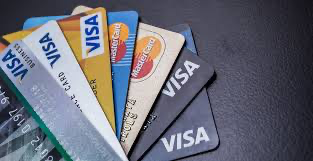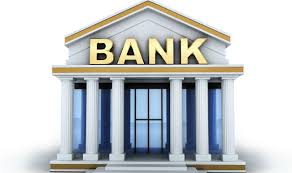Making a travel budget that works.
- Annie Mason
- Jan 11, 2023
- 5 min read
Updated: Jan 18, 2024
We’ve been travelling for 35 years now and EVERY single trip has a budget. Short 2 weeks need a budget as much the “life on the road” that we are living now. It hasn’t been hard for us, as we have a budget at home as well. A budget doesn’t mean recording every coffee, it does mean making sure that you will have enough money to do the things you want to do. The range in a travel budget can be from one end of $1000 a day to as little as $10 a day. Everyone has their own budget that suits them- most of us are somewhere in between the two. My friends budget for a trip may be $200 a day and ours for the same trip is $100 a day- but we both have a budget that fits within what we each personally have to spend.
Some things to remember about a travel budget:
· It motivates you to set a realistic savings target
· It helps you to make realistic travel plans- what can you actually afford- not what do you want. There is sometime a difference. As you get more experienced you will bring the two together. We know what we want like to do and can run a rough budget on our formula (I’ll show you that in a minute).
· It makes sure there are no bad surprises when you get home- like a credit card bill that you end up paying interest on. Ok I admit that has been us. The reality was we hadn’t saved enough but had the time off work and still went on the trip. This isn’t ideal!
· It informs your spending decisions when you are travelling
· It is personal
· Its is a guide and you should never miss amazing opportunities that come your way
· It should not be laborious, complicated or time consuming
· You will have to tweak as you will make mistakes- just adjust another budget to make the annual budget work.
How do we budget in the planning phase:
1. Set up a Trip Template: This will be the basis of your planning and go with you on the trip to manage budget and all travel details. Here is the template we use. We created a tab for every trip we have made in the last 20 years . For short trips, there is a tab each trip. For longer trips we have a tab for each month. You will see we have 3 main fields- transport- accommodation- Living
2. Work out how much travel time you have in your schedule for the next 12 months: This means that you then know how many travel days you have to plan for.
3. Make some itineraries to fit in that schedule: This is the fun bit of working out where you would like to go in the time you have allocated. Don’t panic about what it costs now, that comes next. We put the itinerary onto our spreadsheet and will keep adding more details as the planning continues.
4. Work out what you have to spend on travel for 12 months: Work out exactly how much money you have to spend on travel in a year.
5. Cost out each of your Itineraries. Now you need to put some time into working out what your dream trips will cost and we have a formulae to help you do that.
· Cost your accommodation: This for most of us is the biggest single and most consistent cost. It is easy to work out. Go onto Booking.com and choose the type of accommodation you are looking for. Put in the places you are thinking of going. It may be hostels and dorm beds or apartments or 5 star hotels. So you have your first budget field worked out. Work out your daily accommodation average. Look at our post on “Places to Stay” for some more information on accommodation options.
· Cost your transport: This is the next biggest field and again is easy. Go to Skyscanner to get a rough idea of flight, Autorentals on car and Trainline for buses and trains. You don’t have to use these later, but for budgeting they are great as they cover most countries and are easy to use for price comparisons. I go back to my itinerary and make a My Google Map showing how we will move between the places we will be visiting. Look at our post on “Moving About” for some more ideas and transport information. I add some extra for the odd taxi or ferry.
· Cost your Living Expenses. This is where lots of people get confused. That’s because it is really personal and this is where your budget can come unstuck. We have found a simple way to work out what your living cost may be (this includes, food, activities, shopping, medical). Firstly, cost big ticket items. If you want to dive, hot air balloon or trek to Base Camp you will need to “pull” these costs out and get details for them individually as extras. If you are a big shopper- put a shopping amount aside. We work out the day to day running costs simply- what every you spend on accommodation- you need the same for living (1x Accommodation cost). That means if you want nice hotels that cost $60 a day you probably want some nice activities/food so will also spend $60 a day on Living expenses. When we travel we eat only 2 meals a day and don’t party. We try to have breakfast included where possible. If you are eating out more and drinking alcohol the formula become 2x the accommodation cost. So, our budget shifts depending on the type of trip we are planning. It may be luck, but over the years this simple formulae seems to have worked for us.
6. Add 10%: This is for emergencies and gives you flexibility
7. Don’t forget the upfront and often forgotten “hidden” costs: You will need:
Travel insurance- possibly up to $1000PP for a year (unless you get it with your credit card)- Look at our post “Travel Insurance for long trips”.
Visa: These can range from nothing to $500 PP for the Silk Road trip and South America. They vary depending on your passport, length of stay etc.
Vaccinations and medications- probably $500 PP if you are starting from scratch. Look at our post “Stay Healthy”
Bank Fees: Hopefully you will have read our post “Money Matters” and will be all over this one. They can be zero if you plan ahead or hundreds of dollars if you don’t.
Travel gear- this can be as little as a good travel bag or could go into the thousands of dollars. This includes all your electronics which you may already have, but you may need some extras. Have a look on or post on “Packing for the big trip”.
Any at home costs: If you are lucky these will be few but don’t forget registrations, licences etc
When you get home: We leave a small stash of money for when we get home. If it’s a short trip and we are guaranteed an income quickly it is small. If we return from a long trip we leave 2 months living expenses in our bank.
8. Add the budget amount to your Spreadsheet:
How do we manage the budget when we are travelling:
· We have our travel spreadsheet and that is the basis of how we record all our expenses.
· There are many, many budget apps available and you can choose a favourite. We like TrabeePocket
· We either record daily expenses or put a set amount of cash in the shared wallet and when it is gone- add that to the budget (this is actually easier as you are not having to remember daily small costs).
· Keep credit card receipts to check monthly with statements
· Check all bank accounts and tally up the budget at the end of the month (pay all bills etc)
So, get to it! Make your hard earned dollars go as far as you can!







Comments